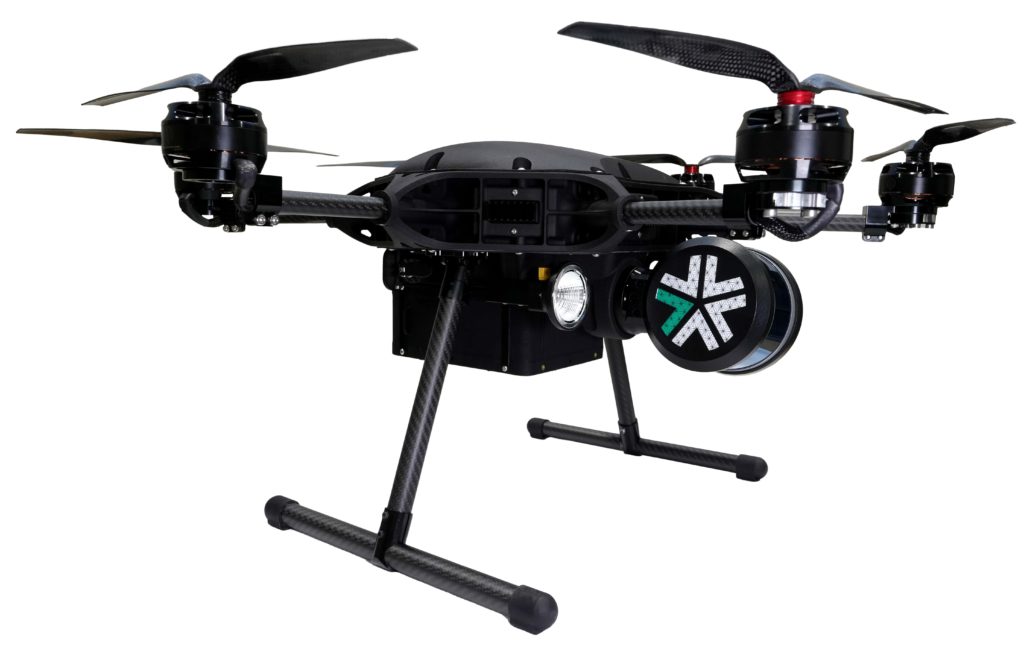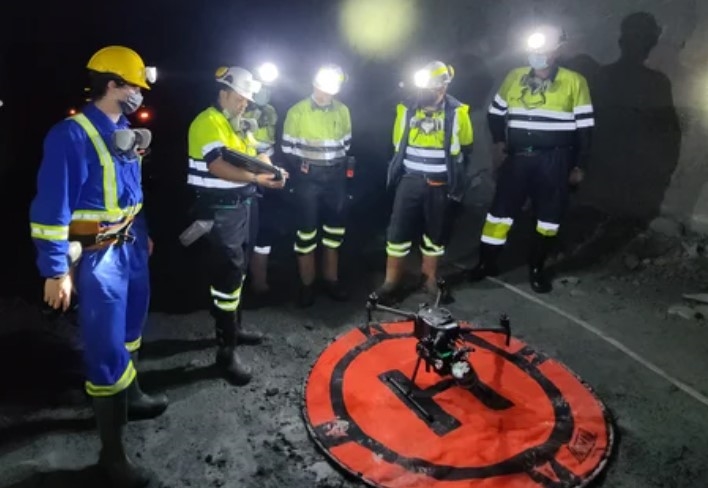The smallest agri-SMEs in Africa owner-managed by women bore the brunt of the COVID-19 pandemic, according to new research led by a team of CABI scientists and published in the journal CABI Agriculture & Bioscience.
The researchers studied data from 119 agri-SMEs – ranging in size from sole proprietorships with one employee to those employing up to 100 people – across six different value chains in Ethiopia, Ghana, Malawi, Nigeria, Tanzania and Zimbabwe.
Value chains that formed part of the survey included – in order of aforementioned countries – rice, oil palm and cocoa, groundnuts, maize, cocoa and rice, rice and sunflower and maize.
Scientists from CABI’s regional centre for Africa in Nairobi, Kenya, and its centre for West Africa in Accra, Ghana, found that while all agri-SMEs were negatively affected by COVID-19-associated restrictions, the size of the firm and gender of the owner-managers resulted in different impacts.
The smallest agri-SMEs, mainly owner-managed by women, were more likely to experience disruptions in marketing their goods and maintaining their labour supply.
Larger agri-SMEs, however, made changes to their business operations to comply with government guidelines during the pandemic and made investments to manage their labour supply – therefore, sustaining their business operations.
In terms of changes in business operations by agri-SMEs due to COVID-19 restrictions, 72% were affected by changes to market access and nearly 70% by health and safety changes. This included the wearing of face masks and hand washing. Labour supply changes affected 40% while 22% were impacted by financing and just over 10% made changes to how they package their products.
Furthermore, modelling results show that financing prior to the pandemic, engaging in primary agricultural production and being further from urban centres, significantly influenced the likelihood of a firm incurring business losses.
Dr Mariam Kadzamira, Senior Researcher, Agribusiness at CABI and lead author of the research, said, “Our findings necessitate engendered multi-faceted agri-SME support packages that are tailored for smaller-sized agri-SMEs.
“Any such support package should include support for agri-SMEs to develop sustainable marketing strategies and help them secure flexible financing that considers payment deferrals and debt moratorium during bona fide market shocks such as the COVID-19 pandemic.”
The study highlights that while sub-Saharan Africa has the highest female entrepreneurship rate globally, these women-led enterprises are more likely to be smaller, informal, and less profitable, with less growth potential than those operated by men.
A key recommendation from the research is that public and private sector entities facilitating entrepreneurship development should establish multi-faceted support packages that will cushion agri-SMEs in the aftermath of the COVID-19 pandemic to allow them to “bounce back.”
Dr Victor Clottey, co-author and Regional Representative, West Africa at CABI, said, “Support should be tailored for smaller-sized agri-SMEs as they are more vulnerable to shocks arising in the market.
“In addition, there is a need for innovative gendered support packages, as most enterprise owner-managed by women are likely to be smaller and hence more vulnerable.
“Any support package put in place should have a work package to support SMEs with developing sustainable marketing strategies and securing flexible financing that considers payment deferrals and debt moratorium for agri-SMEs in the event of a bona fide economic and/or market shock.”
The scientists add that smaller-sized SMEs should be supported not only with financing but also with the capacity to diversify their business operations and income streams to enhance their resilience in the event of market and economic shocks such as the COVID-19 pandemic.
Additional information
Main image: Africa’s agricultural SMEs face many constraints to their growth and sustainability which were compounded by the COVID-19 pandemic (Credit: Pixabay).
Full paper reference
Kadzamira, M.A.T.J., Ogunmodede, A., Duah, S. et al. African agri-entrepreneurship in the face of the COVID-19 pandemic. CABI Agric Biosci 4, 16 (2023). https://doi.org/10.1186/s43170-023-00157-3
The paper can be read open access here: https://cabiagbio.biomedcentral.com/articles/10.1186/s43170-023-00157-3
Funding acknowledgement
This study was funded by CABIs Development Fund (CDF). CABI is an international intergovernmental organization with core financial support from member countries (and lead agencies), including the United Kingdom (FCDO), China (Chinese Ministry of Agriculture and Rural Affairs), Australia (Australian Centre for International Agricultural Research), Canada (Agriculture and Agri-Food Canada), the Netherlands (DGIS) and Switzerland (Swiss Agency for Development and Cooperation).
JOURNAL
CABI Agriculture and Bioscience
METHOD OF RESEARCH
Experimental study
SUBJECT OF RESEARCH
Not applicable
ARTICLE TITLE
African agri-entrepreneurship in the face of the COVID-19 pandemic.
ARTICLE PUBLICATION DATE
1-Jun-2023
Food poverty is a barrier and a ‘pressing matter’ to reproductive justice globally, new research led by Lancaster University has found.
And marginalised people - particularly those who experience multiple forms of marginalisation - are more likely to experience both food insecurity and reproductive coercion and injustices.
Food insecurity – also referred to as food poverty - involves difficulties accessing enough safe and nutritious food to support a healthy life.
Previous research has shown the negative consequences of food insecurity for health and nutrition, children's cognitive development and concentration in school, social exclusion, and other harmful biological and social phenomena.
However, as recent research by researchers at Lancaster University, Simon Fraser University in British Columbia and York University in Toronto has shown, food insecurity is also a pressing matter for reproductive justice.
Developed and led by Black feminist activists and scholars in the United States, and rooted in international human rights law, reproductive justice is a movement that asserts that all people have a human right to have a child, to not have a child, and to parent children with dignity in safe and healthy environments.
Although all human beings inherently have these rights, not everyone is able to realise their rights due to structural barriers, such as racism, sexism, homophobia, and ableism.
In their new research in the International Journal of Sexual Health, Dr Jasmine Fledderjohann, of Lancaster University, Dr Sophie Patterson, of both Lancaster University and Simon Fraser University, and activist and PhD student Maureen Owino, York University, Toronto, give a detailed overview of how and why food insecurity can be a barrier to reproductive justice.
Key examples include:
- Food insecurity can lead to undernutrition. This can infringe on the right to have a child by negatively impacting pregnancy outcomes, and also clearly restricts the right to parent with dignity and safe and healthy environments Because good nutrition is essential for not only children's physical health and development, but also for their broader social well-being and mental health.
- People who experience food insecurity may rely on transactional or commercial sex to acquire food and other resources. This can potentially create a power imbalance in sexual relationships, which can increase the risks of sexually transmitted infections, which are linked to infertility, and the risk of unwanted pregnancy. This threatens both the right to have a child and the right to not have a child.
- Where commercial sex is criminalised, this situation can also put people at risk of imprisonment which restricts access to adequate reproductive healthcare, but it also is highly damaging to relationships, including those between parents and children. Imprisoned people can also experience great difficulty accessing employment and housing when they are released from prison. The authors explain that incarceration is a tremendous barrier to the right to parent with dignity in a safe and healthy environment.
- Food insecurity is closely tied to financial strain, and can place people in a difficult decision of having to decide whether to spend their income on food or on accessing reproductive healthcare. It can increase the risk of intimate partner violence, and make it more difficult to leave a violent situation. Difficulties accessing reproductive healthcare and exposure to intimate partner violence are social problems which cut across the rights outlined in the reproductive justice movement.
The research team emphasises these are just a few key examples of how food insecurity matters for reproductive justice. Not everyone is at equal risk of food insecurity, and not everyone experiences food insecurity as a barrier to reproductive justice in the same way. Around the world people who are marginalised face the greatest risks.
Lead author of the study and leader of the Food Security for Equitable Futures research team, Dr Fledderjohann, says: “We know food insecurity can have very far-reaching negative implications, but too often the implications for sexual and reproductive health and rights are overlooked.
“One of the things but it is very powerful about the reproductive justice framework is that it centres the experiences of marginalised people, whose experiences are needs are frequently and systematically ignored.
“As we discuss in our paper, marginalised people - particularly those who experience multiple forms of marginalisation - are more likely to experience both food insecurity and reproductive coercion and injustices. We hope that our research will highlight these interconnections and lead not only to new research on how food insecurity and reproductive justice are linked, but also, importantly, to social change.”
JOURNAL
International Journal of Sexual Health
METHOD OF RESEARCH
Literature review
SUBJECT OF RESEARCH
Not applicable
ARTICLE TITLE
Food Insecurity: A Barrier to Reproductive Justice Globally

